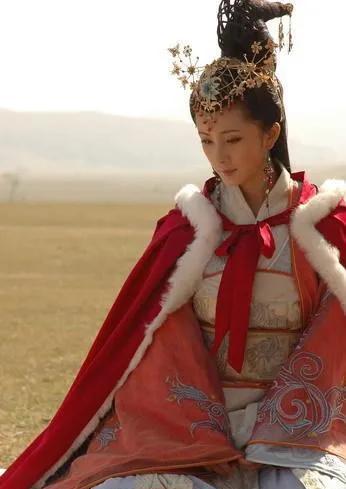
In ancient China, the Central Plains Dynasty and neighboring countries were in a tense situation for many years, and the people on the border suffered from war. Especially on the northern frontier, the ancient nomads were good at plundering the resources and wealth of the Central Plains Dynasty. In most cases, the Central Plains regime was unable to defeat them militarily, so in order to maintain a peaceful and stable environment, the Central Plains imperial family usually used a humiliating policy of peace and affinity.
In fact, peace and affinity can indeed bring about a short period of peace, and can also greatly promote the integration and interconnection between various ethnic groups. For example, the entry of Princess Wencheng into Tibet, which is widely talked about in history, has triggered a series of positive effects. Of course, when people mention peace and kinship, especially when they mention nomadic people in the north, they inevitably think of one person, that is, Wang Zhaojun.
Wang Zhaojun, one of the four beauties of ancient China, was mistaken for a mediocre-looking maid because his posture was not appreciated by the emperor of the Han Dynasty, and was therefore ordered to pretend to be a princess to go and kiss.
Wang Zhaojun wanted to come, which was really painful. For the sake of the Great Han Dynasty, she was willing to go to the bitter cold land in the north of Saibei. Among the four beauties, the other three beauties have caused "life ruin", and she is willing to sacrifice herself for peace.
What's even more distressing, however, is not here. She sacrificed herself for the peace of the Han Dynasty, but was not protected by the Han Dynasty. In her later years, she asked Han Ting for help and wanted to return to the Han Dynasty, but Han Ting's reply disappointed her. At this moment, she felt "abandoned".
After living in the Xiongnu for decades, Wang Zhaojun had his own relatives there, and presumably should have adapted to life there. But in her later years she still dreamed of returning to her homeland, which could only show one problem, that is, she could not stand the customs of the Huns.
The oppression of women in ancient China has always been very serious, so there is the so-called "three principles and five constants". However, in fact, in the Tang Dynasty and Han Dynasty, the oppression of women was not so heavy. After a woman's death, her husband can remarry at will, and she does not have to observe the festival for her husband like the Song Dynasty, which is the case with Lady Wang and Princess Pingyang.
However, the mentality is open, but Han women also have a certain bottom line. The Xiongnu's unacceptable marriage system touched the bottom line of Han women. Most Han Women are reluctant to marry the Xiongnu, not that they cannot adapt to the living environment of the Huns. It is difficult to tolerate their almost perverted customs.
The same was true of Wang Zhaojun, who at that time came to the Central Plains to ask emperor Yuan of Han for affection. Due to the fear of the Xiongnu and the disobedience of the water and soil, many Han princesses refused to go there. At this time, Wang Zhaojun, who was a lowly identity, stood up, and he was willing to pretend to be a princess and go to the Xiongnu.
What Wang Zhaojun did not expect was that after she and Hu Han Evil Shan Yu had only been husband and wife for a few years, Hu Han Evil Shan Yu had died unexpectedly. Due to the harsh living environment of the Xiongnu, the population was small. Therefore, in order to ensure the population, the Xiongnu at that time had a custom, which was the so-called "father's wife succeeds, brother dies and marries sister-in-law".
After Hu Han's death, Wang Zhaojun had to endure this custom and married Hu Han's eldest son, Xin Shan Yu. The two lived together for more than a decade and had several sons.
However, Hu Han's son did not live as long as Wang Zhaojun. Hu Han's son also died, and Wang Zhaojun was already forty or fifty years old at this time. She had to marry her grandson again according to custom.
For Wang Zhaojun, who was a Han woman, this kind of marriage was unacceptable to her in any case, so this was one of the reasons why she wanted to ask the Han court for help. However, giving way at this moment, the Han court is already in decline, and it will not take care of the life and death of a "weak woman". They just asked Wang Zhaojun to continue to use the phrase "peace between the two countries."

The Law fooled the Huns.
In 19 BC, the Xiongnu empress Wang Zhaojun died. Wang Zhaojun made great contributions to the peace of the Xiongnu and Han Dynasties, so many people spontaneously saluted Wang Zhaojun after his death.
After her death, the Huns held a very solemn funeral for her and spontaneously did something to her. The ritual sacrifices of the Huns were strange and were usually carried out using self-mutilation. For example, some people cut off their ears to pay tribute to her, some people cut off their fingers to pay tribute to her, in short, how bloody it came.
In general, this way of sacrifice is difficult to understand, and people are often skeptical of this way of sacrifice, which has not been confirmed because there is no corresponding historical record.